_____________


johnnycute, 18
Vilnius
I‘m a cute eighteen years old boy who wants to see the world without paying for it 😇 and search for the elderly here in the app. I like to get you mad, do karate and play the piano.
Guestbook of johnnycute
Anonymous – Oct 30, 2019
Not really
Dick M, Uncut
Orientation Bi
Body hair Not very hairy
Smoking Socially
Speaks Lithuanian, Russian, English
Position More bottom
Kissing Consent
FF No
S&M Soft SM
Dirty No
Oral Versatile
Rate per hour 180 €
Overnight 1000 €
______________


Δ L I E N (◥ _ ◤), 20
Göttingen
Strictly (painfully) Monogamous & I identify myself for now as a Brat in that I like to goof around, being annoying, i am moody, stubborn & i need lots of attention, so dealing with me can be a real pain in the ass.
My only fetish & fantasy is True love & Monogamy, they will be forever my Ultimat kinks. i just hope to meet my Mr. Right so i can try things with him “only” in a long term monogamous relationship.
Speaking of relationship I’ve never been in a one before, why?! well, look at me!, also I literally have no friends so it would be nice if i can meet a good friend here to talk about everything & nothing.
just let me make it clear that i am not into Friends with Benefits nor i am looking for any “Play Partners”, just True love & Monogamy, okay enough rambling x) thanks for your time, and best of luck to me.
Guestbook of Δ L I E N (◥ _ ◤)
Δ L I E N (◥ _ ◤) (Owner) – Nov 10, 2019
help i lost myself again
loyaltyinmyblood – Nov 5, 2019
Update- He has not been in counselling for two weeks and I am given to understand he has fallen back on his bad habits.
loyaltyinmyblood – Oct 18, 2019
Hello guys! I am a 46 year old who runs a small company and, apropos, works as a volunteer counsellor for a charity helping homeless teenagers getting off the streets.
The main reason I registered this comment is because I am this young man’s counsellor and have been encouraging him to seek a monogamous relationship as a way to escape his bad habits and addictions. I am very proud of him to see he has created this serious and sincere profile.
I will add to it to say he is a sweet and good hearted young man, not one of the typical street teens who live between fast food and drugs and have absolutely nothing to talk about but themselves. Believe it or not, while he is not well educated, he is quite intelligent and a sponge for knowledge, whether it be cultural, business oriented or political. So if you’re looking for a solid fix-er-upper boyfriend, don’t look anywhere else cause he could be the boy of the situation.
When it comes to sex, I can only speak from second hand reports that he is very oriented towards giving satisfaction, especially as a bottom and has been characterised as “very slutty” in the most positive sense. I can say he has a very attractive ass even clothed. Honestly, I’m quite jealous cause I’d love to fuck him myself to confirm that statement but it’s sadly an ethically undoable possibility.
Last but important, whether your interest in him is short term or longterm, DO NOT DO OR PROVIDE HIM WITH CRYSTAL METH.
Dick L, Uncut
Orientation Gay
Body hair Smooth
Smoking Socially
Speaks German, English, Polish
Position Bottom only
Kissing Yes
FF Passive
S&M Soft SM
Dirty No
Oral Versatile
Rate per hour On request
Overnight On request
_______________

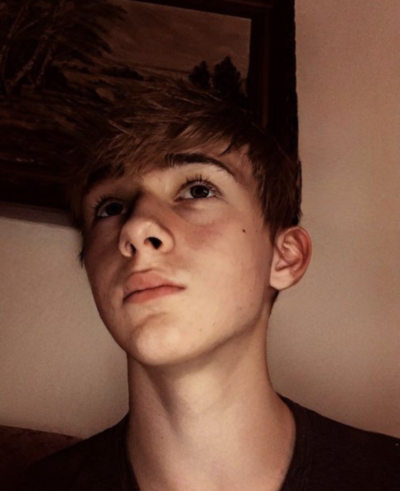
Acetyl-coA, 20
Klaipeda
I will donate my Sperm. You can extract it with your mouth or your Hand. Tip would be nice but not necessary. You should live next to me (in Klaipėda, Lithuania). 🍆✊💧
Guestbook of Acetyl-coA
piotrek5a – Oct 29, 2019
My wife is pregnant with his son. (We hope he has this boy’s looks and my intelligence🤞)
ron92000 – Oct 26, 2019
FYI, acetyl-coenzyme A, usually written acetyl-CoA, is the “activated” form of acetic acid, ie the thioester that forms it with coenzyme A. It is a molecule with high hydrolysis potential located at the crossroads of several important metabolic pathways.
Dick L, Uncut
Orientation Hetero
Body hair Not very hairy
Smoking No
Speaks Lithuanian, German, English
Position Top
Kissing No
FF No
S&M No
Dirty No answer
Oral Top
Rate per hour On request
Overnight On request
_______________


Icanbealotofthings, 23
Dusseldorf
I don’t want to say alot, just what you need to know. I am a sexworker as you might notice. I am looking for someone to pick me up and take me to a place to fuck, no dating, but a date is ok.
I am also up for sale with the right price. Then I am for just about anything. My moustache, for example, can come off, he’ll come back. I do not define myself by my moustache.
Guestbook of Icanbealotofthings
Unknown8 – Nov 4, 2019
Warning-if you have sensitivity to fragrances this guy’s cologne might literally kill you.
Icanbealotofthings (Owner) – Nov 2, 2019
You will never be free from my spell.
spyroast – Nov 2, 2019
This sweaty, greasy little low ball lothario is so hot he turned my brain into my balls. I started jacking about him from the moment he got in my car. Even after I’d shot four loads in him and dropped him off, I was still jacking about him.
Dick L, Uncut
Orientation Bi
Body hair Not very hairy
Smoking Yes
Speaks German, Romanian, English, Italian
Position More bottom
Kissing Consent
FF Passive
S&M Yes
Dirty Yes
Oral Versatile
Rate per hour 150 €
Overnight 2000 €
_______________
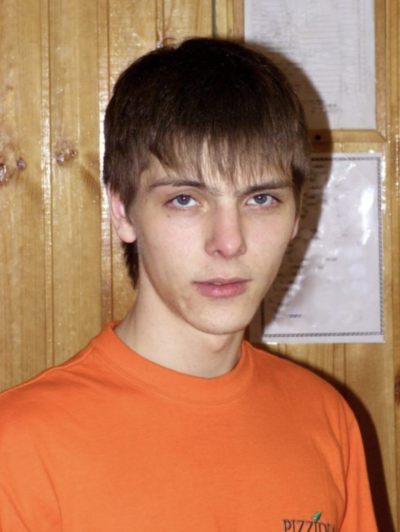
pozsniper, 19
Manchester
POZ PIG 4 POZ PIGS
Need to get 20 quid in my account-Wanna help?
I do not want black people-Because I am racist
The bear above age 29 do not come-Because you will be an idiot
Buy me lunch and watch me eat it-While I give you fuck all
ONLY FOR PEOPLE FROM ARMY AND POLICE
Guestbook of pozsniper
pozsniper (Owner) – Nov 8, 2019
Dream on Fag
blowjobandfuck – Nov 8, 2019
He has the syphilis.
pozsniper (Owner) – Oct 16, 2019
I am so sick of everyone. I’m sick of you pricks flipping your shit on me when I show you that what you are saying is wrong. You can’t accept the facts and you have to be right all the time, yet you yell at me saying ” WHY DO YOU NEED TO ALWAYS BE RIGHT, I’M THE ONE PAYING”. My depression is coming back and this fucking nature of you idiots only triggers my descent. It’s not my fault that you are uneducated, it’s not my fault that you can not handle facts but I will do everything within my power from this moment on to make sure you have no rest.
Dick XL, Uncut
Orientation Heteo
Body hair Smooth
Smoking Socially
Speaks English
Position Top only
Kissing No
FF No
S&M Yes
Dirty Yes
Oral Top
Rate per hour 20 €
Overnight On request
_______________

send-me-money-dd, 21
Cardiff
name jerry married male wife female she doesn’t know want to keep it that way its been a year and half with no sex she has a permanent bladder infection that will never go away I don’t have it she won’t do nothing with me as in sex I have serious cash flow problem too so open to try anything to everything as you like
Guestbook of send-me-money-dd
send-me-money-dd (Owner) – Oct 26, 2019
I’m the type of person that is easy to trip with and you can easily get me because I’m a bit stupid in terms of love but I don’t want a serious relationship with you just like what I said just pay me
Milos2018 – Oct 21, 2019
Know Jerry for a while. He is really a very nice and troubled boy with a very nice ass and cock. Been telling him for a while he could solve his problems this way. Happy for you Jerry😉😉
Dick M, Uncut
Orientation Bi
Body hair Smooth
Smoking No
Speaks English, Welsh
Position Versatile
Kissing Consent
FF Active/Passive
S&M Soft SM
Dirty No
Oral Versatile
Rate per hour 200 £
Overnight On request
________________


yourdreams00, 21
Stockholm
You will never have sex with a more attractive, intelligent boy in your entire life.
Guestbook of yourdreams00
Vit0r – Oct 19, 2019
If you pay him enough, you can eat his shit. For me it was the only way I could get over him.
fkingfinebyme – Oct 16, 2019
I didn’t find him haughty in the slightest, he’s confident but who wouldn’t be if they looked like him.
A00000 – Oct 15, 2019
It was not that hard to throw him off his game. Just don’t play his. Talk down to him, talk dirty. He’s thin skinned, about 1/10 as smart as he thinks he is, and easy to rattle. He was like rigor mortis in bed, but I assume he always is.
julius959 – Oct 12, 2019
Do please note that if his haughty, sociopathic, “seductive” behaviour doesn’t work on you, and it didn’t on me, the idea of having sex with him is truly repulsive.
waseemwdk – Oct 7, 2019
I know I had sex with him because I have the receipt, but it truly feels like I dreamt it. He’s … words fail. My only regret is that he wouldn’t let me eat his shit.
anonymous992 – Oct 6, 2019
He is not exaggerating. He is, however, rather stiff in bed.
Dick L, Uncut
Orientation Gay
Body hair Shaved
Smoking No
Speaks Swedish, Danish, French, English
Position Versatile
Kissing Consent
FF No answer
S&M No answer
Dirty No
Oral Versatile
Rate per hour 300 SEK
Overnight 4000 SEK
________________


needajob, 21
Eugene
I am a young man looking for a job. I can do anything that is asked of me. I can work anywhere in the USA. I have a high school degree.
I am a quiet guy and tend not to speak unless spoken to. I work well in a structured setting and am very keen to discretion.
I have fully functioning sex organs and can bottom or top depending on what is wanted or needed. I have no sex limits and am not judgmental.
In the past, employers have told me that I have somewhat of a robotic personality. I do not say very many words and generally engage in very basic conversation.
I’m task oriented. I get frustrated and freaked out when I don’t have a set of instructions to carry out.
Guestbook of needajob
needajob (Owner) – Oct 28, 2019
I like that my profile made you go completely insane.
yournameisfreak – Oct 28, 2019
Boy, I want you to be a freak.
Sorry boy, you are a freak.
Your name is FREAK. You shall only be referred to as FREAK.
– Freak shall have your hair shaved and removed. All of it. Eyebrows, eyelashes included. Everything.
– Freak shall have subdermal silicone implants to form a ridge like a mohawk. One in the middle of the skull, and a smaller one on each side. The word FREAK shall be tattooed in large letters between the ridges, and on the back of your head.
– The forehead of Freak shall have the word FREAK tattooed in large letters.
– The eyeballs shall be tattooed black.
– Your nose shall be removed, it gets in the way.
– Your cheeks shall have the word FREAK tattooed in large letters.
– Freak shall have all your teeth removed. Your tongue shall be split further back, as deep as possible. Your tongue shall then be pierced in each half with large gauge so as to render any speech unintelligible.
– Your lips shall be sewn to form a round opening, and then injected with fillers to make them extra large so as to naturally form a tight fit on a cock. You jaw will be wired in the appropriate position to be permanently immovable from that point on.
– The word FREAK shall be tattooed on your chin, under your chin, and on your neck. Freak will be fitted with a posture collar to force your head high and expose your neck, you shall wear this until your spine is permanently set in this position.
– No one will ever be able to look at FREAK in the eyes, they will find it too disturbing.
– Freak shall have all fingers amputated, you shall be reliant on Master for all activities.
– Freak shall have enormous breast implants, so as to make general movement difficult and uncomfortable. This will also make you more attractive to straight men as a sex device.
– Freak shall have silicone injected into your cock and balls, as much as possible. There shall be no possibility of penetrative activity. They shall be so large that your legs are difficult to move.
– Freak shall have surgery to cause bladder and bowel incontinence. You will be an animal and will defecate whenever necessary without choice, whatever you are doing.
– Freak shall have your legs amputated above the knee, to ensure you are always lower than Me.
– There is no more pleasure for FREAK.
UptownFrank – Oct 26, 2019
U will be happy to spend your money as u will get most out of it
needajob (Owner) – Oct 25, 2019
Best job I ever had was from UptownFrank. Escorts should get in touch with him and mention my name. If employers want a second opinion on me, check in with him.
Dick XL, Cut
Orientation Bi
Body hair Shaved
Smoking No
Speaks English
Position Bottom only
Kissing Yes
FF Passive
S&M Yes
Dirty Yes
Oral Versatile
Rate per hour On request
Overnight On request
________________



PrettyasaPeacock, 21
London
Looking for something soft? Come have a taste of a pussy that is wet and juicy 24/7.
Something harder? Destroy my pussy.
Want to keep my pussy S sized and sweet? Done.
Want it XXL and shredded? Believe me, I will ask for more.
Guestbook of PrettyasaPeacock
PrettyasaPeacock (Owner) – Nov 12, 2019
I am looking for a reason to delete this account. Fuck a fake smile. Just have something financially worth while, not just pocket change for “right now” . Don’t talk shit with your itty bitty sausage. fuck your opinion, I know who I am and I’m awesome.
M-22X19CM-HARD – Nov 4, 2019
HE BEST ASS ON GOD GREEN EARTH, DON’T BELIEVE PAY TO SEE HE’LL SHOW HE CAPACITY, I HAVE MORE TESTOSTERONA, XXL BIG MONSTER DICK 22x19CM HARD DICK, GIVE HE LONG FUCK, HARD, STRONG FUCK QUALITY FUCK BRUTAL FUCK WITH MY AFRICAN STRENGTH UNTIL THE DOG DOES, SMOKE DRINK CHEMS HARCORE, IT KNOW TO DO WELL DONE, MAKE YOU FEEL like A REAL GOD,EVEN BEING MONEY.
PrettyasaPeacock (Owner) – Nov 1, 2019
Just give me something usable, ty
Let-Me-In – Nov 1, 2019
prices?
Dick L, Uncut
Orientation Gay
Body hair Shaved
Smoking No
Speaks English, Czech
Position Bottom only
Kissing Yes
FF Passive
S&M Yes
Dirty Yes
Oral Versatile
Rate per hour On request
Overnight On request
______________


letsdoitagain, 18
Budapest
I’m looking for someone to buy me iPhone 11 purple 🥺
I’m not looking for anything else in particular, you give me iPhone 11 purple, and if it becomes something, let’s not run that far
I do not have very warm friends, which unfortunately I would love to have a warm friend if I had a buyer here 😊
Im arrogant and think I’m the shit. To be honest I’m very attractive, although getting addicted to Percocet has taken me down a notch.
Dick M, Uncut
Orientation Bi
Body hair Not very hairy
Smoking Yes
Speaks Hungarian, English, German
Position Prefer not to say
Kissing Consent
FF No answer
S&M No answer
Dirty No
Oral No answer
Rate per hour On request
Overnight On request
______________



JoshuaRichards, 18
Amarillo
I Like Gay Porn , I Always Having an Orgasms From Having Sex I Don’t Know Why , I want Get Money For Star In Video Gay and Be Gotten To Know
Guestbook of JoshuaRichards
JoshuaRichards (Owner) – Nov 6, 2019
One Time , and For a Shitload of Money
K3vinn – Nov 6, 2019
he did top
JoshuaRichards (Owner) – Nov 6, 2019
I Won’t Top
K3vinn – Nov 6, 2019
he will top
Dick XL, Cut
Orientation Gay
Body hair Shaved
Smoking No
Speaks English
Position Bottom only
Kissing Yes
FF FF Active/Passive
S&M Soft SM
Dirty Yes
Oral Versatile
Rate per hour 450 $
Overnight 8000 $
______________


BiPaul2000, 19
St. Paul
Hi everyone, you can call me Aorta. I don’t really know why I’m here doing this beside trying it out because a guy on grindr told me I could charge for what we did.
Guestbook of BiPaul2000
BiPaul2000 (Owner) – Nov 12, 2019
10/27/19 Will be sitting in the lounge, If you notice me and recognize me, walk to me and tell me these words – “I know who you are” and take me to any dark room and slip 50$ in my jeans pocket and go nuts.
BiPaul2000 (Owner) – Nov 4, 2019
Thank you.
Anonymous – Nov 4, 2019
Shocked by the callousness of earlier reviewers. Yes, he likes being fucked, toyed, fisted and so on, but beyond that he’s still a human with emotion and depth!
Tomthecat – Oct 31, 2019
If you enjoy
Eating a loose hole
Beating up a slutty ass
Smelling a wet and loose hole
Ass worshipping
Licking and sucking and chewing a loose hole
kouchangg – Oct 17, 2019
his ass without a fuck is like a phone without reception, useless…
marco171 – Oct 9, 2019
don’t ask him why his nickname is aorta. or wait at least until after the sex.
Steevemcgarrett – Oct 3, 2019
The poor pig has now registered here. He can not get hard and lies there like a board. Do you have to do this here ??
Dick M, Cut
Orientation Gay
Body hair Shaved
Smoking Socially
Speaks English
Position Bottom only
Kissing Yes
FF Passive
S&M Yes
Dirty No
Oral Versatile
Rate per hour 50 $
Overnight 300 $
______________



Tommyisfantastic, 19
Irvine
Hey, new in California, came to study at Universityy 🏛
My name is Thomas, but I go by “ Tommy”.
Into pretty much everything, I have very few limits.
⚡️Young but will A LOT of experience⚡️
Possibilities: Anal, BB, chess, roleplay, ws, fisting, abuse, rape, wrestling, pup, nipple, spank, all toysss and gear, latex, group, gangbang, edging, sportaddict!!, public, outdoor…. and probably 10more things I dont remember atm.
We can do 1 or 10 of this things together I am flexible haha🐷
I charge, see my rates, but I also trade free sex in return for things I want and need:
– Gym expert to help me get the perfect body, non-stop💪🔥
– Someone who helps me become more flexible (yoga??)
– Cool guy with contacts in LA who can get me into a casting or modeling or something haha, who knows I might become famous tomorrow😏
– Someone who invites me to best parties in LA, think movie stars⚡️
– Bottom: Im always bottom but will top for free if guy is younger, smaller than me, hairless, cute and with open hole.😍😍😍
– For a second hand car or motorbike🤙
Dick L, Uncut
Orientation Gay
Body hair Shaved
Smoking Yes
Speaks English
Position More bottom
Kissing Yes
FF Active/Passive
S&M Yes
Dirty Yes
Oral Versatile
Rate per hour On request
Overnight On request
______________

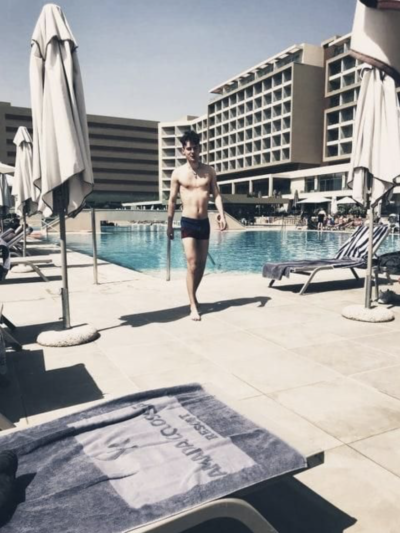
HandsomeSugar_Seeker, 20
Warsaw
Luxury bitch and arrogant kid looking for only for the handsome beautiful and a nice life 😏 Send a pic of you, you clothes, your home, your lifestyle, if i will like them, then we can date. 😍 Everything has its price, also I’m a money-mad Cunt 🤑 but one thing in advance: I’m not dingbat 😏
Guestbook of HandsomeSugar_Seeker
Leon_David_Linn – Nov 10, 2019
If Donald Trump were gay this guy would be his type.
Anonymous – Nov 6, 2019
oh god, yes, yes, it’s Robert G. Wiedermal with a another profile. He is not just shit in sex, but also very stupid. He has a brother who is just as stupid, but better at sex.
Dick XL, Uncut
Orientation Gay
Body hair Shaved
Smoking Socially
Speaks Polish, German, English
Position Bottom only
Kissing Yes
FF No answer
S&M Soft SM
Dirty No
Oral Versatile
Rate per hour 500 €
Overnight On request
______________

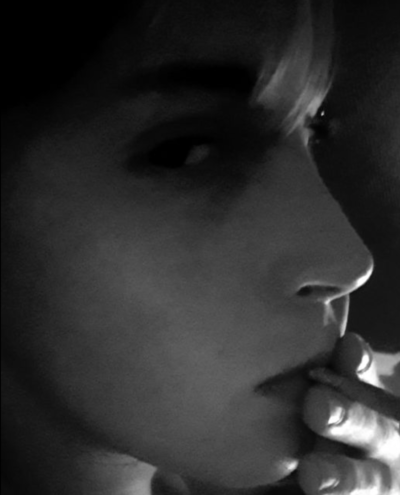

PREDICTABLE, 18
Bogotá,
urgh need money
Guestbook of PREDICTABLE
Anonymous – Oct 27, 2019
God is merciful.
Anonymous – Oct 27, 2019
Thank God for the economic woes in Colombia.
Anonymous – Oct 27, 2019
It’s my all-time top 3.
Anonymous – Oct 27, 2019
It was probably the greatest sex I’ve had in my entire life.
Anonymous – Oct 27, 2019
How was it for you?
Anonymous – Oct 27, 2019
Two nights ago, Wednesday.
Anonymous – Oct 27, 2019
When?
Anonymous – Oct 27, 2019
Yes I did.
Anonymous – Oct 27, 2019
And you didn’t.
Anonymous – Oct 27, 2019
Bully for you.
Anonymous – Oct 27, 2019
I fucked him.
Dick L, Uncut
Orientation Bi
Body hair Smooth
Smoking Yes
Speaks Spanish, English
Position Versatile
Kissing Consent
FF No
S&M Soft SM
Dirty WS only
Oral Versatile
Rate per hour 2 COP
Overnight On request
_____________

Bitch I could drink all day long

I get freaky after six drinks& 37 cigarettes &a gram of coke ;3

I swim but I’d rather go home and get wasted
beddestroyer, 18
Beckley
I have a dog but I’m the bitch
I honestly just want to get wasted so if you wanna drink do drugs and fuck me then hmu
You can come to my house no problem with your friends no problem if you want to bring 5 guys no problem
Guestbook of beddestroyer
wazzzy – Nov 5, 2019
He’s a relativist.
beddestroyer (Owner) – Nov 2, 2019
You can stay sober I like sober guys even more idk why
Dick M, Cut
Orientation Gay
Body hair Not very hairy
Smoking Yes
Speaks English
Position Bottom only
Kissing Yes
FF Passive
S&M Yes
Dirty Yes
Oral Versatile
Rate per hour 100 $
Overnight 500 $
______________

tote_seele_Lutscht, 21
Hamburg
more complicated “” stupid “” stupid man
Prices . can be negotiated like everything
° am new? how to sit
° i am introviert. and all that. you can certainly do something better with it. also has something with shyness. and so on
° I am Laura. a girl . Lesbian. and imprisoned in a young male body (so male body yes, since many can not read yes, or it probably did not learn properly). I seem to love (bondage)
° when it comes to things. then you have to talk about the fears first I can only use people. which are over 100% attracted
° friends friendship. there is not any
° I scratch myself. had to be a hooker earlier than a child. Yes . I was raped too. friendly
this site says something important is not allowed in profile. So I just ask to talk to me
Guestbook of tote_seele_Lutscht
Anonymous – Oct 23, 2019
@ regen11: You are disgusting and your entry nauseating. Take off first 80kg, you fat fattening pig.
Anonymous – Oct 23, 2019
You should go into therapy rather than offer yourself here and make you hurt or injured even more!
regen11 – Oct 22, 2019
He has a massive 15 inch dildo he likes to be used on him after cum has been fully injected into his pussy.
tote_seele_Lutscht (Owner) – Oct 18, 2019
i did. shit fucked me up mentally. destroying myself and shit. oxytocin is why I have make it this long. I am broke tryna make it. doing wha tI can to make shit work. and. I have a lot of potential for some shit. i just havent opportunities to do something with that. I’m too much. i just need so i can stop having the shit fuck up my mind. like it does.
Anonymous – Oct 18, 2019
Dodgy thing to post, i realise, but for the sake of getting everything about this guy out there… Some years back i was shown a series of very disturbing child pornography videos of a young boy, 11 or 12 years old, getting fucked roughly by adult men and gangbanged in one. i’m 90% sure he was the child in them.
tote_seele_Lutscht (Owner) – Oct 16, 2019
I have got lot of insecurities. that come to the surface. if i speak about something I hate I won’t stop. even if it doenst make sense
Anonymous – Oct 16, 2019
@ anonymous guestbook writer: I think dyscalculia is not the main problem here.
Anonymous – Oct 16, 2019
180 for 1 hour, but 5000 for 1 night? The night is not 27 hours and 45 minutes …
Dick L, Uncut
Orientation Prefer not to say
Body hair Smooth
Smoking Yes
Speaks German, Romanian, Croatian, English
Position Bottom only
Kissing Yes
FF Passive
S&M Yes
Dirty Yes
Oral Versatile
Rate per hour 180 €
Overnight 5000 €
______________
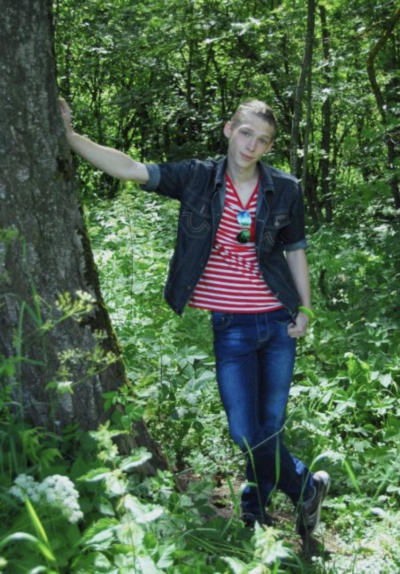

LevGruissman, 20
Budapest
Hi,
this is the escort version of the LevGruissman
profile. It is still under construction, I need more accurate pictures for instance.
May someone like to help me with that in return for a taste?
If you want to get an overview just look up the LevGruissman profile.
Guestbook of LevGruissman
SergioAndrade78 – Nov 11, 2019
If you like Jewish boys, Lev is as hot and great in bed as any Jew out there. If you don’t like Jewish boys, avoid because he is very, very Jewish.
Dick XL, Uncut
Orientation Bi
Body hair Smooth
Smoking No
Speaks Hebrew, English, Hungarian
Position Prefer not to say
Kissing Consent
FF No
S&M No
Dirty No
Oral Versatile
Rate per hour 50000 Ft
Overnight 300000 Ft
______________


TheAgentinianDevil, 18
La Matanza
lana del rey is my mother
Guestbook of TheAgentinianDevil
Roger111 – Oct 25, 2019
The deviant has returned. Use it.
Dick L, Uncut
Orientation Bi
Body hair Not very hairy
Smoking Yes
Speaks Spanish, English
Position More top
Kissing No
FF Active
S&M Yes
Dirty Yes
Oral Bottom
Rate per hour 350 $
Overnight 7500 $
______________
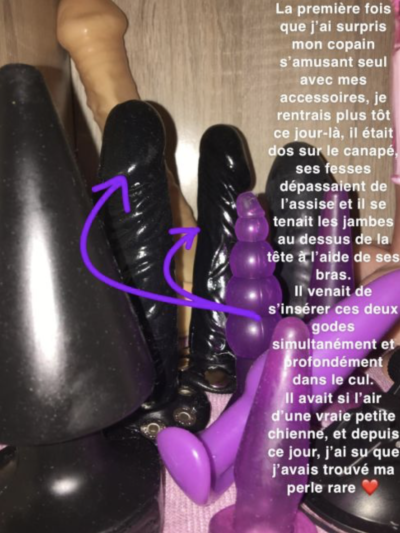

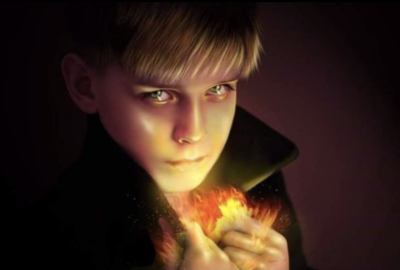
obsedesexuel, 18
Lille
I want tops to rearrange my guts. If you don’t want to, don’t try to talk me into it by offering me more money. That’s just plainly disrespectful.
Guestbook of obsedesexuel
obsedesexuel (Owner) – Nov 6, 2019
Don’t ask me how I feel about stuff.
Anonymous – Nov 5, 2019
98% sure he’s being sex trafficked. dealings with someone named TOP020 who meets you with him, waits outside during date. asked if i was interested in full on purchasing the boy. boy allows quite rough sex, says he likes it but if he does he sure has a scary way of showing it.
lagrande – Oct 29, 2019
Nerd looks, fresh outside, wild insides
Dick S, Uncut
Orientation Gay
Body hair Shaved
Smoking Yes
Speaks French, Ukrainian, English
Position Bottom only
Kissing Yes
FF Passive
S&M Yes
Dirty Yes
Oral Versatile
Rate per hour 200 €
Overnight On request
______________


Fellfromheaven, 19
Tangier
I was the boy in your wet dreams again and again but you never saw me. You just felt me. It’s time to collect all your fantasies and make your dreams come true. I feel like I’m really, really passive.
Guestbook of Fellfromheaven
Fellfromheaven (Owner) – Nov 7, 2019
Yeah its will be nice
Timeisnear – Nov 7, 2019
I believe that would be really nice…
Fellfromheaven (Owner) – Nov 7, 2019
You ‘ll be fine, you should vist morocco, i’ll make sure u’ ll really like it
Timeisnear – Nov 7, 2019
Oh thats very nice from you to say thank you, i got well my lung exploded so thats why i fear flying, pressure is just too high, i was even told that first half of year i cant fly because it would happen again, but its two years now, i feel it still very much, but should be safe, im just worried a lot, this fear cost me a lot lately but well… i would love to see Morocco one day though, sounds lovely…
Fellfromheaven (Owner) – Nov 7, 2019
@Timeisnear, Thats sad, You ‘ll be in good health just take care of yourself then you can go to visit Mallorca in holidays or for weekend and have sex with me thats would be nice, You come here to Morocco its nice too I live in Tangier city we have mediterranean sea and the atlantic Ocean you’ ll like being here
Timeisnear – Nov 7, 2019
Yeah well doubtful, i worked there half of year and my boss died in the end so i would have to do everything from start and that was very hard in first time… now i had a big health problem so that stopped me traveling even for more important reason, im still afraid of something happened to me, but well i will try anyway if i will have a good reason again… just envy your place where you live, its so nice
Fellfromheaven (Owner) – Nov 7, 2019
@Timeisnear, I Hope you ‘ll be back to Mallorca, Mallorca is lovely, I live in Morocco and will have lots of sex with you and its cool living here too
Timeisnear – Nov 7, 2019
Wow you make me miss living on Mallorca, i miss sea so much…
Dick M, Uncut
Orientation Gay
Body hair Smooth
Smoking Socially
Speaks Arabic, English, French
Position Bottom only
Kissing Yes
FF No answer
S&M Soft SM
Dirty No
Oral Versatile
Rate per hour 200 €
Overnight 600 €
______________




YoungBi19, 19
Gargano
I’m Argentinian boy on vacation in the Gargano for the month of September looking for someone who blows me horny and my hole licking horny otherwise I’m looking for nothing so I do not do anything and I let my cock and hole be spoiled and I’m not mobile and not so you would have to pick me up with your car and we’ll do it in your automobile!
Guestbook of YoungBi19
YoungBi19 (Owner) – Sept 22, 2019
Man you’re straight cancer aint you ya troll
FabiMuc – Sept 22, 2019
Egotistical narcissistic deluded little boy who thinks he’s going to look like that forever.
YoungBi19 (Owner) – Sept 15, 2019
Who shit claims about me and rumors in the world I shit on the stupid thing of you
Anonymous – Sept 15, 2019
his butt becomes fuckable if you check something off in his wish list. i bought him a premium netflix account.
Dick M, Uncut
Orientation Gay
Body hair Smooth
Smoking Yes
Speaks Spanish, Italian, English
Position Prefer not to say
Kissing Consent
FF No
S&M No
Dirty No
Oral Top
Rate per hour 250 €
Overnight On request
_____________

Lucifer, 19
Albany
Adolescent athlete turned teen actor (TV, commercials, small movie roles) whos currently hard up for acting jobs and playing an escort. You want a quick fuck? Now available here in upstate for a bit. Smaller cute and at the same time also tough boy against love and shit. Write to me and see what happens.
Guestbook of Lucifer
Lucifer (Owner) – Nov 12, 2019
It’s very hard for me to believe it too.
Anonymous – Nov 12, 2019
I’m a fan and it’s very hard to believe it’s really you here doing this.
Lucifer (Owner) – Nov 9, 2019
Photo’s me, and that’s all you gonna get… give me a reason to take more photographs of myself.
Dick L, Cut
Orientation Bi
Body hair Smooth
Smoking Yes
Speaks English
Position Versatile
Kissing Consent
FF No
S&M Soft SM
Dirty No
Oral Versatile
Rate per hour 400 $
Overnight 3000 $
______________

IGiveDrunkenAss, 24
Scranton
I work in the rap industry and have a lucrative writing deal with a specific record label but NDAs prevent me from going into much detail here. I speak Spanish fluently and I have a passport. One time, Noami Campbell thought I was Ryan Phillep
Guestbook of IGiveDrunkenAss
Anonymous – Nov 8, 2019
Become first a man and not a girly fag. Take off 10 kg and then make a new profile again .. because you were not cool
heyhello51 – Nov 3, 2019
He is good if you like to dress like a demon clown and humiliate boys. He arrived as a not convincing rapper, got very drunk then I was the evil circus clown forcing him to gag on cupcakes over and over while spanking him to keep him prancing for entertainment. Stuffed his mouth full of whip cream while forcing him to oral train a huge dildo with evil clown music blaring around. Extreme bizarre humiliation for hours on end. You get the idea.
rawrawgvd98 – Oct 26, 2019
i stuffed him full of cocaine and devoured his cock which was smaller than i’d hoped but extremely delicious.
Dick M, Cut
Orientation Bi
Body hair Not very hairy
Smoking Socially
Speaks English, Spanish
Position Versatile
Kissing Consent
FF No answer
S&M No answer
Dirty No answer
Oral Versatile
Rate per hour 250 $
Overnight On request
_____________


Denniis, 19
Bucharest
➡️ If u look imperfect and wait for me to say “no, u’re splendid” wrong.
➡️ Don’t compliment me so much, my cuteness is well known to me, there is nothing special about it.
➡️ The importance of life I do not think consists in physical perfection, I think it consists in the intellectual perfection that I want to demonstrate.
➡️ If u are frustrated with writing so many messages that I require of u before I agree to meet, u have the arrow to exit my profile or u have the block button.
➡️ Stop giving me messages like “will u be my sugarbaby, boyfriend, wife”, I’m not interested in that, I want to fuck u.
➡️ Criticize me, judge me, get tired. Don’t think I am listening to u. 💖
➡️ I believe in signs, I am Libra.
➡️ Be intelligent; u do not have to be Einstein, but u should master spelling. Be creative; u do not have to be Bob Ross, but a little creativity or u will bore me.
👋
Guestbook of Denniis
Denniis (Owner) – Nov 13, 2019
If I haven’t written back to you that’s because half the world is fucking me and I’m busy.
Denniis (Owner) – Nov 6, 2019
I loved ur money
OsirisTorres – Nov 6, 2019
if you make him come to your house and show you his ass you will cum in few seconds
Dick L, Uncut
Orientation Gay
Body hair Shaved
Smoking Yes
Speaks Romanian, French, German, English
Position Versatile
Kissing Consent
FF No
S&M Soft SM
Dirty WS only
Oral Versatile
Rate per hour 120 €
Overnight 500 €
______________

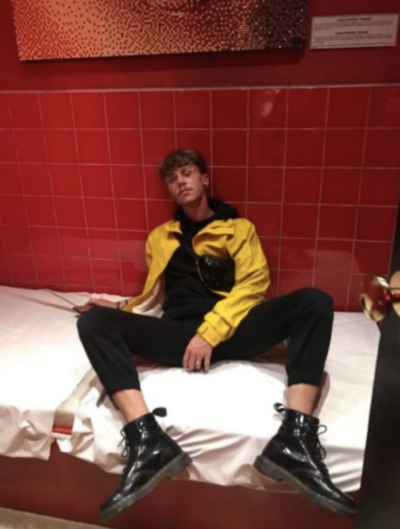
TwinkSeekingMultipleSugardaddys, 21
Manchester
One major point about me is that I use my brain a lot, and I use it well… I am versatile in my behaviour and that means I can *play* around with who I am at different times with different people.
That is why my mindset is very polygamous and I am capable of forming & building up many sugardaddy relationships simultaneously, despite them being potentially vastly different – e.g. I’m submissive pleasure faggot in one, and just a fuck-buddy for another guy(s).
I am complex, yes. But that does not make me difficult, in fact it simplifies things. My personality is like my ass, you can either spend hours probing around in there not finding much & only maybe hitting the right spot… or I can tell you where you ought to go and I’ll be flexible & open enough to let you go full-throttle on me.
If there are sugardaddys out there who want to play and don’t mind that I’ve other sugardaddys or are interested in my styles of fun… then recognise that my being dumb can make me smart & my being smart can make me dumb.
Guestbook of TwinkSeekingMultipleSugardaddys
SeekingMultipleSugardaddys (Owner) – Oct 14, 2019
This app is weird.
J – Sept 30, 2019
Arranging to meet this escort has proved a timewasting experience.
I met him successfully in early July. His profile was then called ‘Just Ask’ (account name ‘Tight Ass’) and his offer was words to the effect of ‘I love getting fucked, pay me,’ and his price was highly affordable. He seemed a nice, polite and respectful young man, and had an ass you could write an epic love poem about. I posted a “5-star” review.
For a month and a half after that he never signed into his account. I assumed he was no longer escorting, so I deleted his name and number from my phone’s ‘Contacts’.
In the second half of August he contacted me out of the blue. I saw he had logged into his account for the first time in weeks. His profile name had changed from ‘Just Ask’ to ‘JuicyJordan’, but his account name was still ‘Tight Ass’, and his photos and text were the same.
As he had taken the initiative in contacting me, I took the time and trouble to message him back. He wanted me to book him again, and I said yes. I suggested a date and time to him, but he e-mailed me back to say he could now no longer travel to me because he was ‘completely broke.’ I messaged him back, offering to book a hotel near him to accommodate a meet. At that point he broke off contact, and I heard no more from him. A few days later his profile vanished, and this site confirmed he had deleted it.
I assumed he had vanished for good, so again I deleted his name and number from my phone’s ‘Contacts’. Then, out of the blue, he texted me on 27th September. His text said: ‘Hi, I’m so, so sorry for the long delay in replying to you.’ I spotted his profile back up. It was now called ‘SeekingMultipleSugardaddys’ but it had a new account name: no longer ‘Tight Ass’ but now ‘Newbie99’, and the long, involved new profile text you can see for yourselves and with the new extraordinarily outlandish prices! I took the time and trouble to reply to him. He told me he had deleted his previous profile ‘by accident’. He said he would like to meet me again, and we arranged a meeting but he flaked – he suddenly stopped replying to my texts.
Perhaps he flaked because the previous reviewer took him out of service, but it’s still rude.
aj543 – Sept 28, 2019
Fisted him, ruined his arse, destroyed the ruins.
Hate fucking gold diggers!
TwinkSeekingMultipleSugardaddys (Owner) – Sept 17, 2019
A COMMENT WAS MADE I DON’T KNOW WHAT A TWINK IS. EAT ME. I’VE BEEN FUCKED BY MORE TWINK LOVERS THAN YOU CAN COUNT.
plsno – Sept 5, 2019
I just wasted four days with him waiting for him to get “in the mood” but I would have wasted them anyway so whatever
Dick M, Uncut
Orientation Gay
Body Slim
Body hair Not very hairy
Speaks English
Position More bottom
S&M Soft SM
Fisting Passive
Dirty No
Rate per hour 70000 £
Overnight 200000 £
____________

SatansInseminator, 24
East Los Angeles
Top with 24x6cm of dick. i hope to find a nice ass hole for make it hard. Your place or outside, saunas. I give brutal assfucks without mercy rough and raw and ruthlessness. I only BB – I’m poz detectable – turns some on, some off and others not bothered! But I’m rolling with it coz you cant beat a poz load in my opinion!
Guestbook of SatansInseminator
SatansInseminator (Owner) – Oct 19, 2019
😈 don’t need to sell my soul, he’s already in me
Dick XXL, Uncut
Orientation Bi
Body hair Not very hairy
Smoking Socially
Speaks English
Position Top only
Kissing No
FF Active
S&M Yes
Dirty Yes
Oral Top
Rate per hour 300 $
Overnight On request
____________

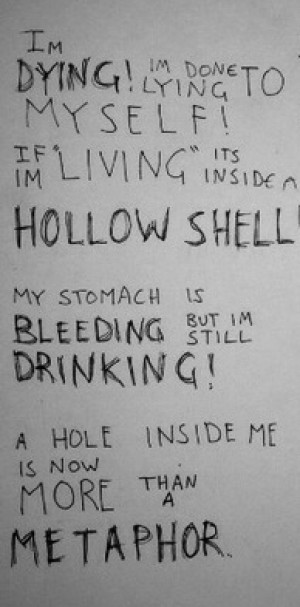
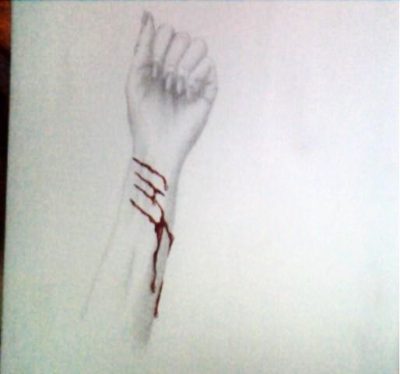
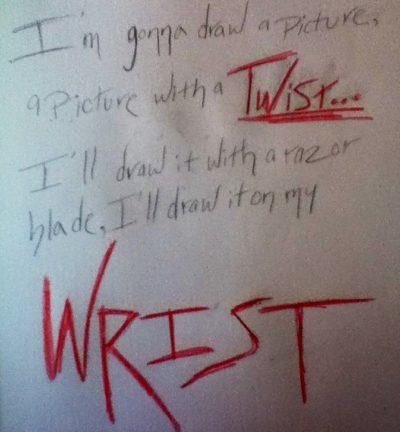
CrimsonBloodlust666, 18
Berlin
Im 17 years old and i’m having trouble finding myself in this world…i claim to be goth and dress like one to others around me yet have little knowledge of “how to be goth” or i just don’t know about gothic things i guess (i jam out to sisters of mercy and other gothic bands Lmao) yet i don’t know how to truely embrace my gothic side :/.. so if your a goth or maybe a professor that knows about “gothic” feel free to be with me and gve me a few pointers and you know sex and money… thx <3
Guestbook of CrimsonBloodlust666
CrimsonBloodlust666 (Owner) – Nov 5, 2019
Oh, and don’t be a ghost. I’m scared of 👻👻👻
CrimsonBloodlust666 (Owner) – Nov 4, 2019
Theyre not! i stole them :'( i just think they’re cool
Kendrick – Nov 4, 2019
if those r ur writing and drawing i think u have a prity good idea of what goth is
CrimsonBloodlust666 (Owner) – Nov 2, 2019
But if you have DRUGS. I will call the police ASAP.
It is illegal to have drugs in your house.
CrimsonBloodlust666 (Owner) – Nov 2, 2019
If you want to have sex, I’m a virgin. Embarrassing but I have never kissed a boy or man. It would be best if you’re a man who kisses me so passionately that my knees wobble and I collapse. A man who can take advantage of my being goth and weak, and fuck me hard.
Dick M, Uncut
Orientation Prefer not to say
Body hair Not very hairy
Smoking Yes
Speaks English, German
Position Bottom only
Kissing Yes
FF No
S&M Soft SM
Dirty No
Oral No answer
Rate per hour On request
Overnight On request
____________


inthemoodfor♨️⛰🚲🎲🎧🎟🏊♂️🍾🥟🍌🥦🍳🥑🍇🐱, 21
Moscow
Hey, maybe little sponsorship?
ALL PICS ARE REAL 100,000%
You can break my bed, but not my heart.
Available 24/7
Guestbook of inthemoodfor♨️⛰🚲🎲🎧🎟🏊♂️🍾🥟🍌🥦🍳🥑🍇🐱
09756426108 – Oct 12, 2019
Spent last night with him. I will state that I was quite skeptical. His vapid and rather embarrassing comportment on talk shows and in the tabloids as Human Ken Doll had made me fear a lot of silliness and little sexual substance. But no. He is not entirely unintelligent, has a sense of irony about his fleeting fame, and it becomes clear very quickly that to get his fame involved giving a lot of quid pro quo sexual favours. I have to say he’s not cheap … but his cuteness, a very welcoming mouth and tireless ass, and the novelty factor are really worth all of it. I don’t think we’ve heard the last of this industrious young careerist.
inthemoodfor♨️⛰🚲🎲🎧🎟🏊♂️🍾🥟🍌🥦🍳🥑🍇🐱 (Owner) – Oct 7, 2019
Yes I am Andrew Boldar luxury escort for luxury clientele (Former celebrity all the world nicknamed me the “Human Ken Doll” because I can as much be the one) I make delivery at the night at about 4600 € . I am open to everything and to anyone as long as discretion (no photos, videos, ) and the financial means follow.
PERFECTLY08 – Oct 5, 2019
excuse English of mine. I work in Tuaron Management, of managing Andrew Boldar Human Ken Doll until April this year. We created Human Ken Doll image for him becuase he has no talent for sing or acting. He is ruthless ambition and has much sex for advancing the career. we cancel of his contract because of too many scandal and was small interest in him any more.
Anonymous – Sept 29, 2019
Wild! Even if you live in Russia, you may not recognize the boy in the fotos. His stage name is Andrew Boldar and he is a heavily self-promoting minor Russian celebrity, model, “singer” and influencer who calls himself the Human Ken Doll. I assumed this escort profile was a fake, but I contacted him out of curiosity. He “reluctantly admitted” to being Andrew Boldar and claimed his celebrity is on the wane, which is true — he “peaked” nearly two years ago when he had a more androgynous emo look — leading to his need to find work where he can. Certainly his astronomical asking price fits the bill as does his demand for an extraordinary level of discretion.
Dick M, Uncut
Orientation Gay
Body hair Shaved
Smoking No
Speaks Russian, English
Position More bottom
Kissing Consent
FF No answer
S&M Soft SM
Dirty No
Oral Versatile
Rate per hour 28000 RUB
Overnight 200000 RUB
____________

theytoldmeiamcrazy, 19
Paris
I’m just your regular straight/bi French teen who’s 18 and still in highschool, but who’s a secret greedy “twink”.
I’m always horny, my girlfriend hates me because i’m so horny, so let’s fuck baby
When I’m a “twink”, money waved at me is like a magic wand.
Wave the wand and use me as you wish! Your greed, your lust is in the foreground. I am only your means to an end. You set the tone, and I am holes, terrain, a source of liquids what you can use.
Girly voice on command.
Please breed me. 🏊♀️🧘♂️🎬🎪🎳🎮🚖🚈🛥🏖🏦🎞🛀❤️
Attention: When I’m in the middle of school exams, I DO NOT look like in my picture
Guestbook of theytoldmeiamcrazy
Anonymous – Sept 25, 2019
Drowned in August while swimming off the coast of Spain.
Dick L, Uncut
Orientation Bi
Body hair Not very hairy
Smoking Yes
Speaks French, English, Spanish
Position Bottom only
Kissing Yes
FF Passive
S&M Soft SM
Dirty Yes
Oral Versatile
Rate per hour 280 €
Overnight On request
*
p.s. Hey. I’m off to London this morning to do this event tonight. There won’t be a p.s. tomorrow because I’ll still be there in the morning. And there won’t be a p.s. on Monday because I have an early morning meeting at ARTE about the TV series project that day. So you’ll get a couple of restored, p.s.-less posts during the blog’s next two outings, and I’ll be back with a new post and a catch-up p.s. on Tuesday. Cool? Cool, hopefully. ** David Ehrenstein, Hi. Oh, nowadays she’s had a whole lot more work done than just her nose. She’s not bad wacko necessarily, she just is. ** _Black_Acrylic, My pleasure, Ben. Really glad you listened and enjoyed things. That’s that new Patrick Cowley album, no? I read there’s a new, possibly last collection of what’s left over coming out or out. Wait, dude, happy birthday! Everyone, it’s Ben “_Black_Acrylic” Robinson’s 40th birthday today. Raise a glass of something or cordon off a bite of cake or a cookie or something sugary with his name on it please. That fancy place looks both fancy and actually appealing too. What were the odds. Enjoy the big day, man! If I can steal the time, I will see the Nan Goldin show. I’d like to. Time will be short and it will tell. ** Sypha, Hi. Cool, always happy to help surface the unnecessarily obscure. That is some old stuff. I will disagree with Mr. E that ‘Let It Bleed’ is the best RS album, although it’s quite good. The Brian Jones era is very worth exploring now that you’re inside them. I haven’t tried the new Nick Cave. I haven’t been so into what he’s been doing for a long time. But I’ll slip into that one and try. Thanks, James. ** Barkley, Hi, B. That was my assumption and borderline understanding re: the reboot. Glad to the hear the series might milk the tonal stuff that made those films pop. I always try to steer people away from the Paul Schmidt translations precisely because it’s always the number one search find. You’re listening to the yeule album, cool. Me too, I guess duh. Thanks a lot for the pointers at those other artists on her netlabel. I’ll go sweep them up. Happy weekend! ** Steve Erickson, Hi. Very happy to hear that so many of the gig entries interested you. Good, sounds like the finessing of your film is all schemed out, Let me know how that goes when you get to those points. I’ve known of that French porn film for a long time but I never saw it. I suppose Altered Innocence will slip me a link when I ask. Narrative 70s porn is quite an interesting genre/phase. It rarely works, but the filmmakers’ usage of the fact that their films would only be seen in a theater where fast-forwarding was not an option lead to some very interesting if sometimes strangled attempts to flush out the emotion and aesthetics around/in the porn that contemporary porn makers rarely bother trying to access. ** Okay. Escorts day, obviously. You know the drill. The blog will see you faithfully tomorrow and on Monday, and I’ll be back chatting with you over its steering wheel on Tuesday. Fine long weekends to you.
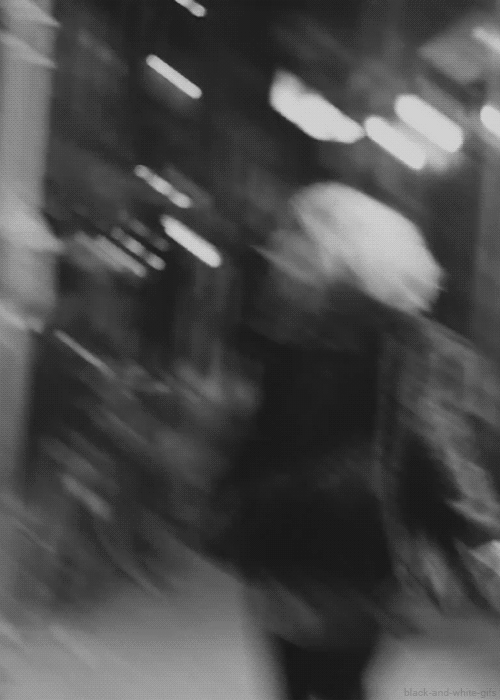
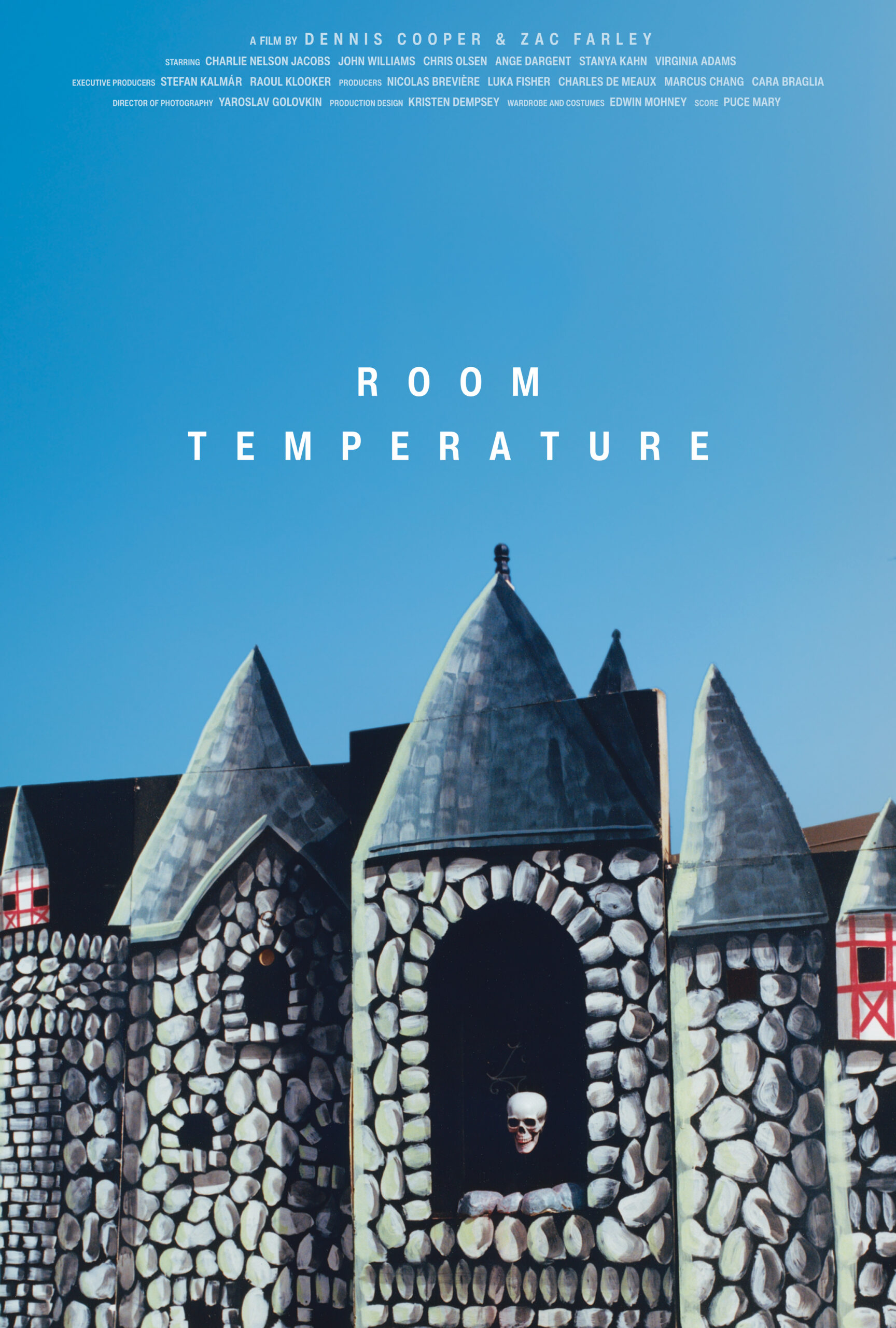



 Now available in North America
Now available in North America 